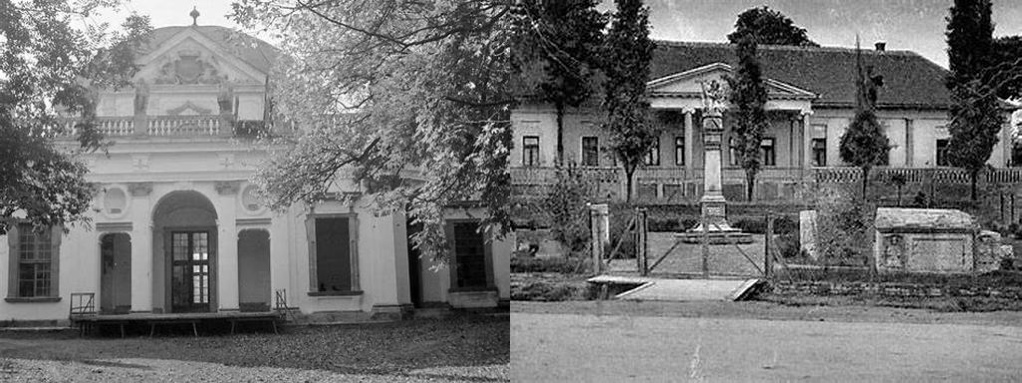
Joób-kúria, nestled in the tranquil village of Fancsal in Hungary’s Borsod-Abaúj-Zemplén county, is not exactly the kind of place you’ll find plastered on souvenir postcards or jostling with crowds of tourists snapping endless selfies. In fact, as you approach along quiet country roads lined with fields and distant woodland, you’ll understand instantly: this is a destination for travelers who savor authenticity, who value the rich texture of layered history over flashy modern attractions. Visiting the Joób Mansion is like stepping into a slower rhythm of life, tinged with the nostalgia of past centuries. The moment you pass the gates, the hushed surroundings seem to urge you to pause, linger, and let your curiosity lead the way.
Constructed in the early 19th century, the mansion owes its existence and elegant Neoclassical lines to the enterprising Joób family, minor aristocrats who found their fortunes tied to the shifting tides of Hungarian history. It’s said that the original owner, Joób Mátyás, commissioned the house around 1820, infusing its rooms with the ideals of rational enlightenment and rural tranquility that were sweeping the countryside at the time. You can still sense this vision in the building’s stately proportions: subtle symmetry, graceful columns, and a cool color palette that once dazzled in the sunlight. While weather has softened the features and time has worked its inevitable wear, the mansion retains a quiet dignity—a kind of gentle resilience. In the main hall, for instance, traces of original frescoes and decorative motifs reveal what life was like for landed gentry who balanced cosmopolitan ambitions with the daily pulse of estate management.
But Joób-kúria is not merely a relic, frozen in amber. Over the years it has shifted and adapted, just like the region around it. The 20th century, turbulent for most of Central Europe, left its mark in sometimes unpredictable ways. After the abolition of the aristocracy and the convulsions of world wars, ownership changed hands, and the mansion often stood at the mercy of neglect or practical necessity. At one point, stories say, it served as a school during the post-war period, with children’s laughter echoing in rooms where banquets and clandestine conversations once took place. Today, restoration efforts continue—slow, careful, and sustained by a mix of local pride and a growing appreciation for architectural heritage. As you wander through cool passageways and stand in front of grand, sash windows halfway obscured by climbing ivy, you are literally treading the intersection of eras.
What makes a visit here truly memorable, though, is the mansion’s setting in Fancsal itself. Unlike the big cities with their glamor and bustle, the village gently reveals its stories to those who linger. The countryside ebbs outward in gentle undulations, punctuated by groves and streams, agricultural plots, and, in spring, a riot of wildflowers. You’ll likely encounter local residents—some with ancestors who worked on the estate—who might share anecdotes, directions, or even fruit from their gardens. The Joób-kúria is not simply an architectural site, but a living symbol of community, memory, and the unique interplay between landscape and history. If you listen, the walls seem to breathe with tales of past celebrations, struggles, and the ordinary drama of rural Hungarian life.
A walk through the grounds in late afternoon, when light slants golden through the trees, may lead you to the old garden, its borders softened by time but retaining hints of their original symmetry. Typically, you won’t find meticulously curated beds or dramatic water features; instead, there’s an honesty to the nature here. The grass and shrubs appear as though borrowed directly from paintings of the Hungarian countryside—unforced, abundantly green, and humming with the sound of bees. If you’re lucky, you might spot an old sundial or a weathered stone bench, vestiges of a world where days unspooled at a slower, deliberately measured pace. Quiet birdsong replaces city noise, and the manifold details—cracked stone, wild roses, faded ironwork—invite reflection rather than just a glance.
Don’t be surprised if the hours slip away. The Joób-kúria exerts a gentle pull on those who visit—an invitation to imagine, to savor the patina of history, and to reconnect with a rhythm of life that is increasingly rare. Whether you’re a lover of architectural detail, a fan of local history, or simply in search of respite from the blare of the modern world, give yourself the gift of unhurried time at this quiet crossroads of past and present in the heart of Fancsal. It’s a reminder that beauty often lies in what endures—often quietly, and just slightly off the beaten path.





